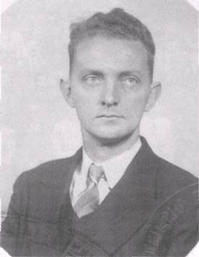


Memories of the Bureau, 1946 to 1962
Foreword
Terminology
Prologue
Preface
Chapter 1: The Warren Years, 1946 to 1950
Chapter 2: International Meteorology
Meetings of the IMO Technical Commissions in Toronto
The IMO Conference of Directors, Washington DC
The US Weather Bureau
Meeting of IMO Regional Association for the South-west Pacific
Meetings of the IMO International Meteorological Committee
Chapter 3: The Timcke Years, 1950 to 1955
Chapter 4: A Year at the Massachusetts Institute of Technology
Chapter 5: The Dwyer Years, 1955 to 1962
Chapter 6: A Springboard for the Future
Appendix 1: References
Appendix 2: Reports, Papers, Manuscripts
Appendix 3: Milestones
Appendix 4: Acknowledgements
Appendix 5: Summary by H. N. Warren of the Operation of the Meteorological Section of Allied Air Headquarters, Brisbane, 1942–45
Endnotes
Index
Search
Help
Contact us

Meetings of the IMO Technical Commissions in Toronto
The meetings of the Technical Commissions took place in the lecture rooms of the University of Toronto in Bloor Street with sleeping accommodation in the students' quarters.
The 10 Technical Commissions which met in August/September were those for Synoptic Weather Information (CSWI), Aerology (CAe), Climatology (CCl), Aeronautical Meteorology (CAeM), Instruments and Methods of Observation (CIMO), Agricultural Meteorology (CAgM), Maritime Meteorology (CMM), Bibliography and Publications (CBP), Hydrological Commission (CHy) and the Commission for Projection of Meteorological Maps (CPMM).
Meetings of the six IMO Regional Associations were also held in Toronto. These were those of RA I (Africa), RA II (Asia), RA III (South America), RA IV (North and Central America), RA V (South-west Pacific) and RAVI (Europe). The Regional Association meetings were not lengthy and were mainly concerned with arrangements for future meetings.
Because two or more meetings of Technical Commissions were conducted concurrently H. N. Warren and I saw little of each other except in the early morning, during lunch breaks and in the evenings.
Warren's main concern was with the business of CSWI, CAeM and RA V. The original title of CSWI was Commission for Weather Telegraphy which was mainly concerned in the early 1900s with the organisation of a system for the exchange of weather data by telegram in Europe.
A numerical five-figure code had been derived by IMO in pre-war days and had been used in Australia and New Zealand in the 1930s although a word code was also still in use in 1940 for transmissions from part-time observers in Australia.
CSWI's preoccupation was with the codes to be used for transmission of weather information and the symbols to be used in plotting of this information on weather maps. Although the establishment of a world-wide system for the exchange of data was some 20 years in the future, those at the Toronto sessions of CSWI were laying the foundations for such a system and Warren was well aware of the significance of this subject for the future.
CSWI's preoccupation was with the codes to be used for transmission of weather information and the symbols to be used in plotting of this information on weather maps. Although the establishment of a world-wide system for the exchange of data was some 20 years in the future, those at the Toronto sessions of CSWI were laying the foundations for such a system and Warren was well aware of the significance of this subject for the future.
People in Bright Sparcs - Gibbs, William James (Bill); Warren, Herbert Norman
 |
Bureau of Meteorology |  |
© Online Edition Australian Science and Technology Heritage Centre and Bureau of Meteorology 2001
Published by Australian Science and Technology Heritage Centre, using the Web Academic Resource Publisher
http://www.austehc.unimelb.edu.au/fam/0950.html